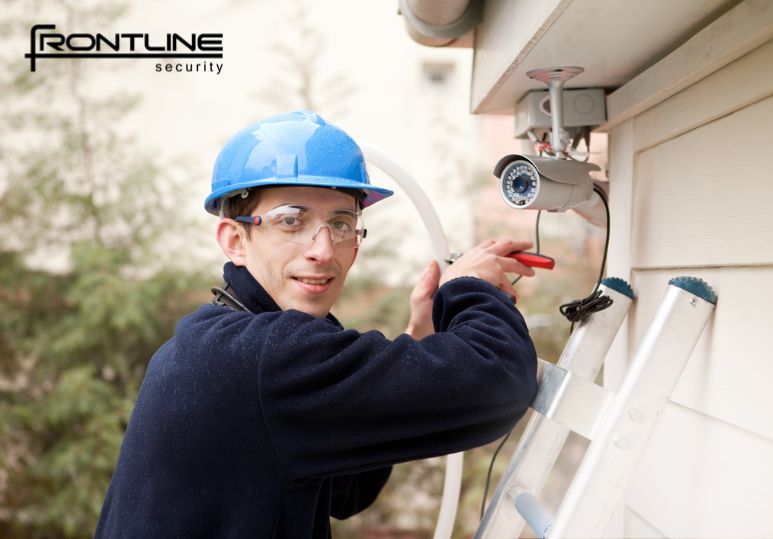Tips for Effective Camera Placement in Commercial Video Surveillance

In commercial settings, the efficacy of video surveillance hinges on strategic camera placement. It's essential to first identify the primary purpose of your surveillance, be it theft deterrence, operational monitoring, or safety assurance. Cameras should focus on high-risk and high-traffic zones such as entrances, exits, and cash registers. Lighting plays a pivotal role, with factors like natural light changes and reflections affecting camera performance. Modern camera features, like motion detection and night vision, if aptly leveraged, can enhance surveillance capabilities. An effective surveillance setup isn't solely about monitoring; it promotes a safe environment and engenders trust among staff and customers. Proper placement fosters a balance of security and trustworthiness in commercial spaces.
In today's world, security is a paramount concern for businesses, big and small. Whether it's to deter theft, protect assets, or simply keep an eye on daily operations, effective video surveillance has become a staple for commercial establishments. However, placing cameras at random spots won't yield the desired results. The success of a surveillance system significantly depends on strategic camera placement. With this in mind, here are four supportive guidelines to ensure your camera placement is effective and serves your surveillance needs to the fullest.
Understand the primary purpose of your surveillance.
Before placing cameras, it's essential to clarify why you are investing in surveillance in the first place. Are you primarily looking to deter potential thieves? Or maybe monitor employee activity? Perhaps you want to ensure the safety of both customers and staff? Understanding your specific goals will determine where and how you place your cameras.
For instance, if theft deterrence is the primary objective, placing cameras in plain view at the main entrances and exits might be more effective. However, if you're interested in monitoring daily operations, discreetly positioned cameras within the premises might be the way to go.
Prioritize high-risk and high-traffic areas.
Every commercial space has areas that are more prone to incidents or have a higher footfall. These areas could include entry and exit points, cash registers, stock rooms, or any other place where valuables are stored.
By focusing your camera placement on these high-risk areas, you ensure that you capture the most critical footage. For instance, a camera directly above a cash register can deter potential thieves and keep an eye on daily transactions. Likewise, a well-positioned camera near entrances and exits can give you a clear view of everyone who comes in and out of your establishment, allowing for easy identification if the need arises.
Consider the lighting and environment.
While modern cameras are equipped to handle a range of lighting conditions, it's still crucial to consider the impact of natural and artificial light sources. The glare from a setting sun or the reflection from a shiny floor can make the footage useless if not accounted for.
For outdoor cameras, consider how the lighting changes throughout the day and across seasons. Ensure that the camera's field of vision is never directly facing the sun at any time of the day. For indoor cameras, be wary of light fixtures that might cause reflections or glares. Remember, a well-lit area not only provides clearer footage but can also act as a deterrent to malicious activities.
Take advantage of camera features and technologies.
Today's surveillance cameras come with a plethora of features, from wide-angle lenses to motion detection and from night vision to pan-tilt-zoom capabilities. Utilize these features to maximize the effectiveness of your surveillance system.
For instance, a wide-angle camera can cover larger areas like parking lots or lobbies. Cameras with motion detection can be set up in less frequently trafficked areas, saving storage space by recording only when there's activity. Similarly, night vision is a must-have for spaces that aren't well-lit after dark, ensuring continuous, effective surveillance.
The importance of effective video surveillance in commercial establishments can't be stressed enough. However, simply having cameras isn't enough. It's where and how you place them that makes the difference. By understanding your primary surveillance objectives, prioritizing high-risk areas, accounting for lighting, and making the most of available camera features, you ensure that your surveillance system works optimally.
Remember, an effective surveillance system isn't just about catching wrongdoing—it's also about creating a safer, more secure environment for everyone. Approach camera placement with empathy, respect for privacy, and a genuine desire to protect, and you'll not only achieve effective surveillance but also foster trust and peace of mind among staff, customers, and stakeholders.
Written on behalf of Frontline Security.
*Fire, Lighting & Electrical services are no longer offered by Frontline, contact us for any commercial / residential Security services.
FAQs
PTZ features allow operators to remotely control the camera's movement and focus, enabling dynamic monitoring of various areas using a single camera.
Avoid placing cameras in private spaces like restrooms or changing rooms. Ensure all surveillance follows local regulations, and always inform staff and visitors about areas under surveillance.
It depends on the objective. For theft deterrence, visible cameras can be more effective. For monitoring specific activities discreetly, hidden cameras may be preferable.
Get the Peace of Mind You Deserve
You’ve worked hard to build your business or buy your home. Now it’s time to protect them properly and give yourself the peace of mind you deserve. Our full-service security solutions can give whatever matters most to you the 360° protection it needs. Contact us today by calling (403) 291-9311 or by filling out the form below and put us on your frontline.
